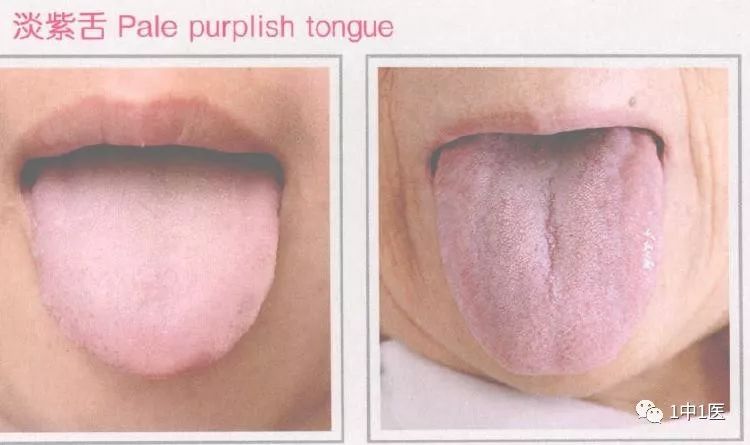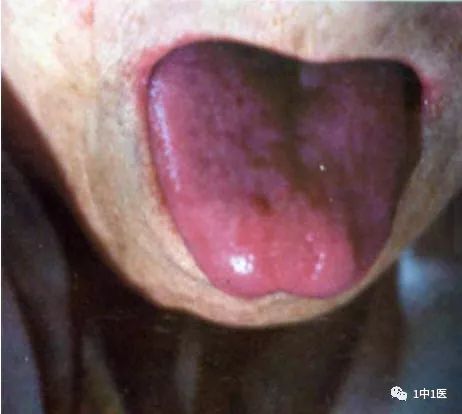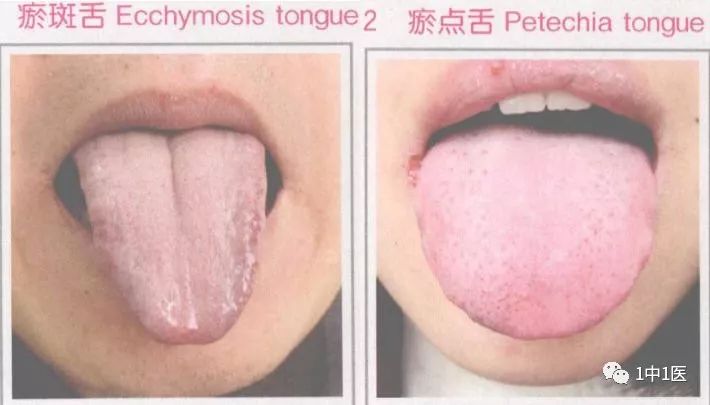Learning Tongue Diagnosis from Scratch 0 – Introduction
Learning Tongue Diagnosis from Scratch 1 – Principles of Tongue Diagnosis
Learning Tongue Diagnosis from Scratch 2 – Overview of Tongue Diagnosis Methods (Part 1)
Learning Tongue Diagnosis from Scratch 2 – Overview of Tongue Diagnosis Methods (Part 2)
Learning Tongue Diagnosis from Scratch 3 – Tongue Color 1
Learning Tongue Diagnosis from Scratch 4 – Tongue Color 2
Learning Tongue Diagnosis from Scratch 5 – Tongue Color 3
Today we will discuss the final part of tongue color in tongue quality, specifically the tongue colors that are purplish or bluish. Generally speaking, these colors indicate stagnation of Qi and blood, leading to Qi and blood stasis and blood stasis.
First, let’s talk about the relatively simple dàn zǐ shé (light purple tongue). As the name suggests, the light purple tongue has a pale tongue body with a slight bluish-purple hue. The pale color indicates that it belongs to a condition of excess Yin and cold, which leads to Qi and blood stagnation, Qi deficiency, and blood stasis. Therefore, the tongue color is not only pale but also bluish-purple, referred to as light purple tongue. This includes both a latent and an overt condition, with the overt condition being blood stasis and Qi stagnation, while the latent condition is indicated by the pale tongue color, suggesting that blood stasis and Qi stagnation are due to deeper issues of Yin and cold.

In contrast, there is another type of tongue called jiàng zǐ shé (deep purple tongue), which is not covered in this book. The light purple tongue is caused by Yin and cold deficiency, while the deep purple tongue has a deeper pathological cause of heat. Its color is deep red with a bluish-purple hue, and it is often accompanied by a dry and scanty tongue, with little or no coating. The pathological cause is due to heat toxicity that has deeply penetrated the Ying and blood, leading to damage to the Ying and Yin, resulting in Qi and blood stagnation. Thus, while both the light purple tongue and deep purple tongue indicate Qi and blood stagnation, their deeper pathological causes differ. If the tongue color is dull, it is due to Yin and cold; if the tongue color is red-purple, it is due to heat. The latter is often accompanied by signs of fluid damage, such as a scanty and dry tongue coating, indicating injury to the Ying and blood, and blood deficiency. This combination of real and false causes leads to Qi and blood stagnation, presenting as a deep purple tongue, which is a combination of deep red and bluish-purple.

Another type that is noticeably bluish-purple is directly referred to as qīng zǐ shé (bluish-purple tongue). This bluish-purple tongue does not simply have a light white tint with a slight bluish hue, nor is it a deep red tongue with a bluish hue; rather, it is characterized by a severe bluish-purple color throughout the entire tongue. The pathological cause is not as overt and may be more complex. However, if the entire tongue is bluish-purple, it indicates a systemic and serious condition of Qi and blood stagnation. The deeper internal pathological causes may include excess Yin and cold, failure of Yang Qi to circulate, or heat toxicity that has deeply penetrated the Ying and blood, leading to Qi and blood stagnation. It may also be due to liver Qi stagnation or lung Qi failure, causing Qi stagnation, which in turn leads to poor blood flow and blood stasis. In summary, these three pathological causes include one related to cold, one to heat, and another where Qi stagnation affects blood flow, leading to blood stasis. The fourth and fifth causes are less common, such as those caused by external trauma damaging blood vessels, or congenital heart disease and poisoning leading to bluish-purple tongue. These two angles do not count as pathological causes but indicate the possibility of external injury or congenital deficiency or poisoning leading to bluish-purple tongue. These cases do not show obvious signs of heat or cold, and we collectively refer to them as bluish-purple tongue.

Finally, there is a type of tongue that has localized bluish-purple areas, referred to as yū bān shé (stasis spot tongue) and yū diǎn shé (stasis point tongue). These two types are more commonly seen in clinical practice. They can be categorized into one phase: stasis spot tongue has larger bluish-purple spots on the tongue, while other areas remain normal in color, indicating localized Qi and blood stagnation in certain organs; the lighter version is stasis point tongue, which consists of small dots often found on the tip, front, or sides of the tongue, with the color differing from the tongue itself, indicating localized Qi and blood stagnation. Stasis point tongue is generally lighter than stasis spot tongue.

In summary, bluish-purple tongue, stasis spot tongue, and stasis point tongue all reflect Qi and blood stagnation. However, if the entire tongue is bluish-purple, it indicates a systemic condition; if it is stasis spots or points, it indicates localized conditions, which are generally milder than systemic conditions, with stasis points being milder than stasis spots. Of course, the fewer stasis spots or points, the milder the condition. Additionally, there are two extreme cases: one is the light purple tongue, and the other is the deep purple tongue. The deep pathological cause of the light purple tongue is cold, while the deep pathological cause of the deep purple tongue is heat.
Today we have completed the discussion on bluish-purple tongues and concluded this section on tongue color. In the tongue color course, we generally categorize the tongue colors into several types, aside from the normal light red tongue, including pale white, red, and bluish-purple tongues, which together describe the overall condition of tongue color.
